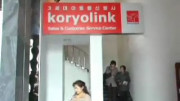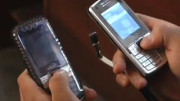North Korea could finally be getting a long-overdue upgrade to its 3G cellular network. A report says the country has begun importing used 4G networking equipment from Huawei and will launch the new network in major cities. Huawei supplied the current 3G network.
The report comes a week after Korean Central Television broadcast a report explaining the benefits that 4G and 5G networks bring over 3G technology and against the background of research and development into 4G technology at domestic research institutes and universities.
The introduction of 4G would bring data speeds approximately ten times faster to a network that appears to be more and more important to the lives of North Koreans. In addition to news and educational portals, the state-run intranet now hosts online shopping, video-on-demand and electronic payments. All would benefit from a faster network.
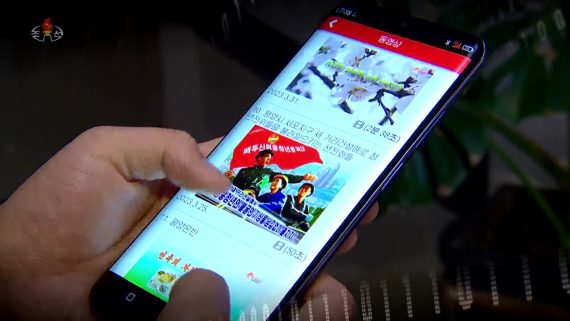
A North Korean smartphone in use, shown on Korean Central Television on October 22, 2023 (Image: KCTV)
Background
The current 3G network was launched on December 15, 2008, by Cheo Technology, a joint venture between the then Ministry of Posts and Telecommunications (now the Ministry of Information Industry) and Egypt’s Orascom Telecom.
While subscriber take up was initially slow, the service soon began attracting significant numbers of users and reached its first million customers in February 2012.
With increasing users came increasing profits, and that’s when trouble began. When Orascom tried to repatriate profits, it ended up in a dispute with the government over the exchange rate. While the dispute continued, the government set up a rival cellular network to draw customers away, Orascom alleges. Soon, the second network, called Kangsong, was up and running, and North Korea had two 3G networks.
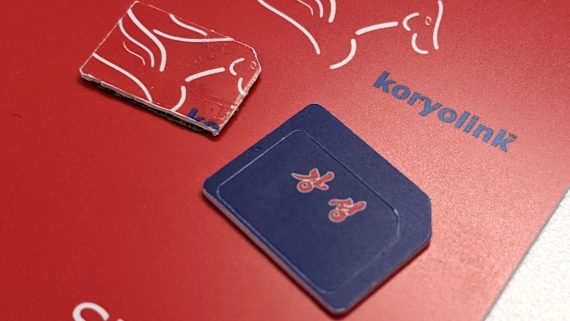
SIM Cards for the North Korean Koryolink and Kangsong networks (Image: Martyn Williams)
Jump forward a decade, and it appears that mobile phones are deeply integrated in today’s North Korea. Before the pandemic, visitors spoke of how common it was to see North Koreans on smartphones, and it’s now a common sight to see the same on state media.
The network has expanded greatly and now reaches into towns and villages across the country, according to our analysis based on commercial satellite imagery. To date, over 1,000 base stations have been identified, but there are sure to be many more.
The Road to 4G
The cue for an upgrade came in January 2021 at the Eighth Congress of the Workers’ Party of Korea when Kim Jong Un set out priorities for the telecommunications sector.
“The field should step up technical updating of its infrastructure and turn mobile communications into a next-generation one as early as possible by developing the relevant technology,” he said, according to a Korean Central News Agency (KCNA) report.
At the time, I speculated whether that meant a literal jump in generations, as from 3G to 4G, or a figurative one to a more advanced technology based on a technology such as Wi-Fi.
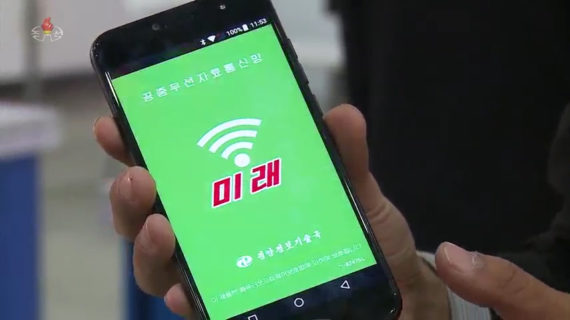
The Mirae network app on a smartphone (Photo: KCTV)
The country has continued to expand the public Mirae WiFi network over the last few years, but it now looks like a cellular upgrade is also in the works.
On Friday, Daily NK reported that upgrades to existing cellular base stations had begun in October and tied the move to the party congress call. The upgrades are being done with secondhand Huawei equipment imported from China.
Research Work
Kim Jong Un’s party congress speech appears to have given the country’s scientists their instructions as the number of scientific papers referencing 4G LTE technology began increasing about a year after the speech. The papers are highly technical and give little away about deployment of 4G, instead focusing on issues such as frequency selection, design of indoor networks and machine-to-machine networks.
Researchers also appear to be looking beyond 4G. In the second quarter edition of the Academy of Science journal this year, a paper appeared on energy efficiency in 5G networks.
TV Coverage
While news and information features on smartphones appeared several times a year on state television before the pandemic, they have been a rare sight since 2020, presumably due to COVID-19 import restrictions that stopped new handsets coming into the country.
That seems to have changed, and now, several new handsets have recently been featured in state media. Some appeared in a broadcast on October 22 that looked at advances in the mobile telecom industry. Among the subjects was the development of 4G and 5G technology and the benefits it would bring.
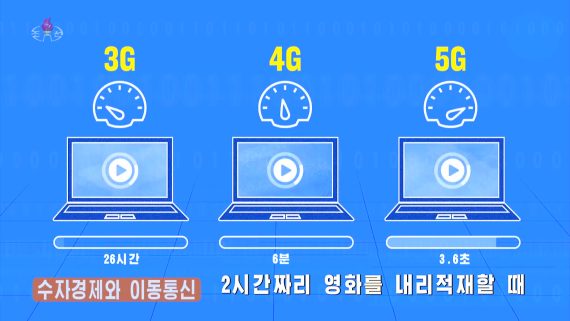
A graphic from a Korean Central Television program on October 22, 2023, explains the speed advantages of newer cellular technology (Image: KCTV)
One graphic reported the speed improvement each successive technology introduced, and another explained that 4G was introduced in 2009. Eagle-eyed Korean Central Television (KCTV) viewers might have noted that was when 3G was first introduced to North Korea, putting the country a generation behind.
During the program, Kwon Won Sung, a director of the Ministry of Information Industry, outlined the advances to come.
“With 3G technology, we were not able to have smooth data communication,” he said. “It was slow and had a narrow bandwidth, but with the advent of 4G, the speed increased. The speed has increased tenfold, enabling seamless data transmission.”
Indeed, the introduction of 4G and 5G in the television program seems to hint at improvements to come in the domestic cellular market; otherwise, why advertise to viewers that other countries have it better?
An upgrade to 4G now would follow the introduction of previous generations of cellular technology. Sunnet, a 2G network, launched in 2002 just as other countries began the rollout of 3G technology, and Koryolink launched its 3G network in late 2008, just a few months before the first 4G networks went on the air. The country is late by a generation because it makes use of secondhand gear that comes on the market as other operators are upgrading their networks.


